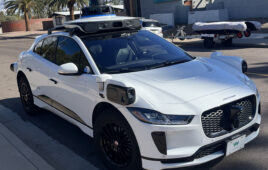One of the most interesting memories from my engineering classes in college was when a structural engineering professor took an entire class to thoroughly go through a real life engineering disaster. The sad topic was the 1981 tragedy at the Kansas City Hyatt Regency, where glass skywalks collapsed, killing 114 people and injuring 216 more.
A key to the accident was a mistake made by the contracting engineering firm. Instead of suspending both walkways from long steel tie rods—as the drawings indicated—the firm used rods from the ceiling to the upper walkway and then separate rods connecting the upper and lower walkway. This seemingly simple design change in fact doubled the load seen by the beams and bolts of the upper walkway.
I can recall the professor sketching the free body diagrams on the board and pretty much the whole class having an “aha!” moment as we all realized the mistake concurrently.
Another engineering disaster that is often discussed in classrooms is the Tacoma Narrows Bridge, aka Galloping Gertie. It’s likely so well known because of the unreal video footage that was captured of the concrete deck twisting in the wind as though it was made from rubber. The collapse was caused by aeroelastic flutter, but many smaller issues contributed, down to the fact that the seals on the hydraulic dampers were ruined when the bridge was sandblasted for painting.
The Challenger disaster—and later the Columbia re-entry tragedy—showed what can happen when engineering and layers of bureaucracy don’t mix well. But beyond the political or communication issues, they still offered insight into the fascinating complexities of the shuttle system and reminded us all that these flights were anything but routine. O-rings and insulating foam became part of the everyday lexicon for a time.
Mathematics is certainly at the foundation of all engineering, and simple miscalculations—or even scarier, confusion about imperial/metric conversions—can have devastating consequences, as we saw with the 1999 Mars Climate Orbiter. And although test results showed that the Hubble Space Telescope’s primary mirror was flawed, the manufacturers ignored the data and assumed the testing itself was flawed and inaccurate.
Another infamous engineering mistake happened at Denver International Airport, which opened in the mid-90s. The automated baggage handling system was touted to be the most advanced in the world, but it never worked as touted. In fact, the system caused a 16-month delay, pushing the airport’s opening back from 1993 to 1995 and costing the facility more than a half billion dollars. Engineers were never able to get the system to work as promised, and it was completely scrapped by 2005.
Instead of repeating these mistakes, it’s critical that we use these real-world examples to impress upon young engineers that less-than-critical thinking can lead to lost billions—and sadly, lost lives. But the discussion shouldn’t happen only in the classroom. It’s important to have an open discussion about these failures.
Sadly, we only gain insight through reading official government reports or local engineering investigations, due to the litigious society we live in. Wouldn’t it be great to hear directly from the principals involved? What did they learn? What breakdowns in the system led to the failures? In hindsight, what would they or their teams have done differently? How can we avoid the next tragedy?
What historical engineering failure has most fascinated you over the years? Weigh in on Paul’s blog at the Engineering Exchange.
Paul J. Heney – Editorial Director
[email protected]
Filed Under: Commentaries • insights • Technical thinking





Tell Us What You Think!